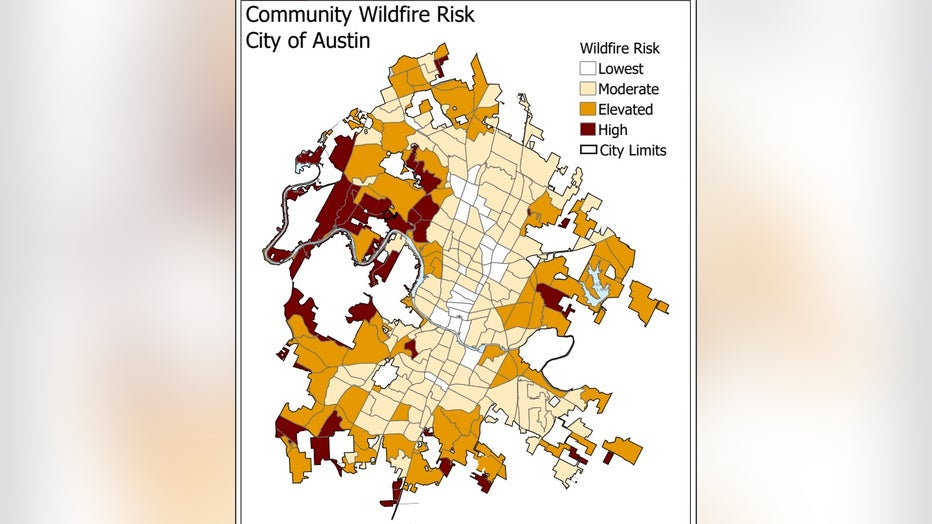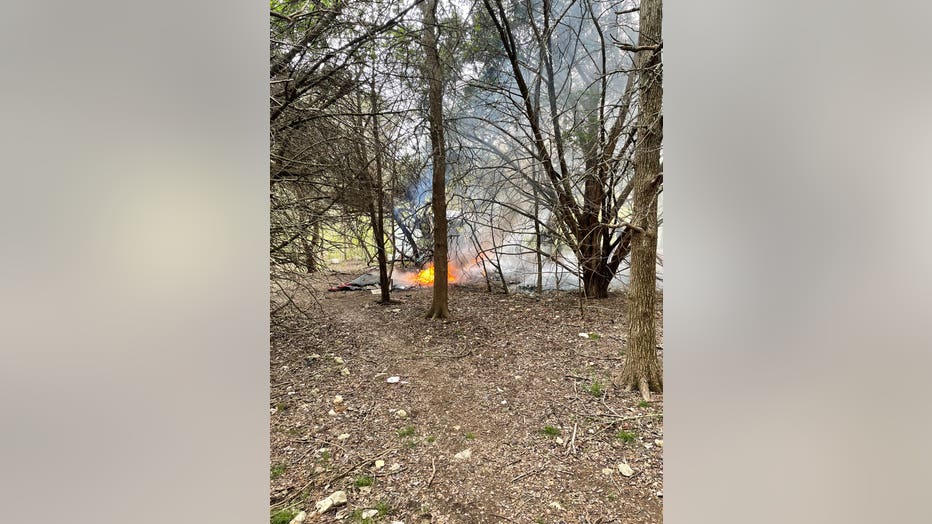Austin city leaders taking key steps when it comes to wildfire mitigation
AUSTIN, Texas - Wildfire risk remains high across Central Texas with conditions expected to get even more dangerous as the week goes on. However, Austin city leaders say they're taking some key steps when it comes to wildfire mitigation.
With temperatures in the 90s Tuesday, and high winds starting Wednesday, Austin’s wildfire risk is set to ramp up big time.
"Temperatures are going to be going up. Humidity is going to be going down," said FOX 7 Austin meteorologist Carlo Falco. "We’re still talking about some really high, critical to even extreme fire danger."
City leaders say we’ve frankly been lucky so far.
"We live in the fifth-greatest community in the whole country for wildfire danger," said Division Chief Thayer Smith with the Austin Fire Department.
That’s why Mayor Pro-Tem Alison Alter pushed for a wildfire audit three years ago.
"It is a matter not of if, but when," said Alter.
It led Austin to be the first Texas city to adopt a Wildland Urban Interface Code — which holds new buildings in at-risk areas to higher fire standards.
The city has also been doing what’s called "fuels mitigation," cutting back flammable brush.

Wildfire risk remains high across Central Texas with conditions expected to get even more dangerous as the week goes on.
"That helps us to lessen the amount of dead and overgrown vegetation, which is the fuel for a wildfire," said Alter.
Austin Energy is taking similar action around power lines.
"By the end of 2022, we will have cleared all the high risk wildfire circuits," said Alter.
Most importantly, city firefighters are undergoing new training on how to fight wildfires.
"Some of the instincts that you have when you're fighting structure fires don't work the same when you are fighting a fire in the wildland urban interface," said Alter.

That’s why Mayor Pro-Tem Alison Alter pushed for a wildfire audit three years ago.
Officials with the Austin Fire Department says sending crews to recent wildfires across Texas have been a huge part of that.
"That’s tremendous for our members that are able to go support these other communities, and then bring that knowledge back to us, to train our folks," said Smith.
Despite all the progress, Alter admits we’re still vulnerable. She’d like to see that training expedited, and points out older buildings aren't covered by the new code.
Also, she worries about fires sparked in homeless encampments — like one Monday afternoon between Mopac and Gracy Farms Lane in North Austin, in which a pile of trash caught fire.

A pile of trash was caught on fire at a homeless encampment Monday afternoon between Mopac and Gracy Farms Lanes in North Austin.
"Wildfire risk is one of the details that goes into the matrix for highlighting which encampments that we need to be going in and relocating folks where we need to be addressing that. The system is not perfect," said Alter.
The city is also teaming up with high-risk neighborhoods, urging residents to take action themselves.
"If you want to make sure your gutters are clean, if you want to make sure that the brush is further away from your house, particularly if you're in those areas, that's important," said Alter.
Alter says the city has also been working to ensure critical infrastructure is resilient to wildfires, as well as to improve evacuation technology.
Alter says if you see a situation in your neighborhood that is a wildfire risk, you can call 311. She also encourages neighbors to team up using a group called Firewise.
Residents can form a FireWise chapter in their neighborhood to tackle wildfire prevention strategies.
For more on Austin’s Wildland Urban Interface Code and a map of which neighborhoods are at higher wildfire risk, click here.
___
MORE HEADLINES:
Air quality concerns growing due to wildfires, wind gusts in Texas
Texas raises state preparedness level to Level 4 due to wildfire activity
___
DOWNLOAD: FOX 7 AUSTIN NEWS APP
SUBSCRIBE: Daily Newsletter | YouTube
FOLLOW: Facebook | Instagram | Twitter

